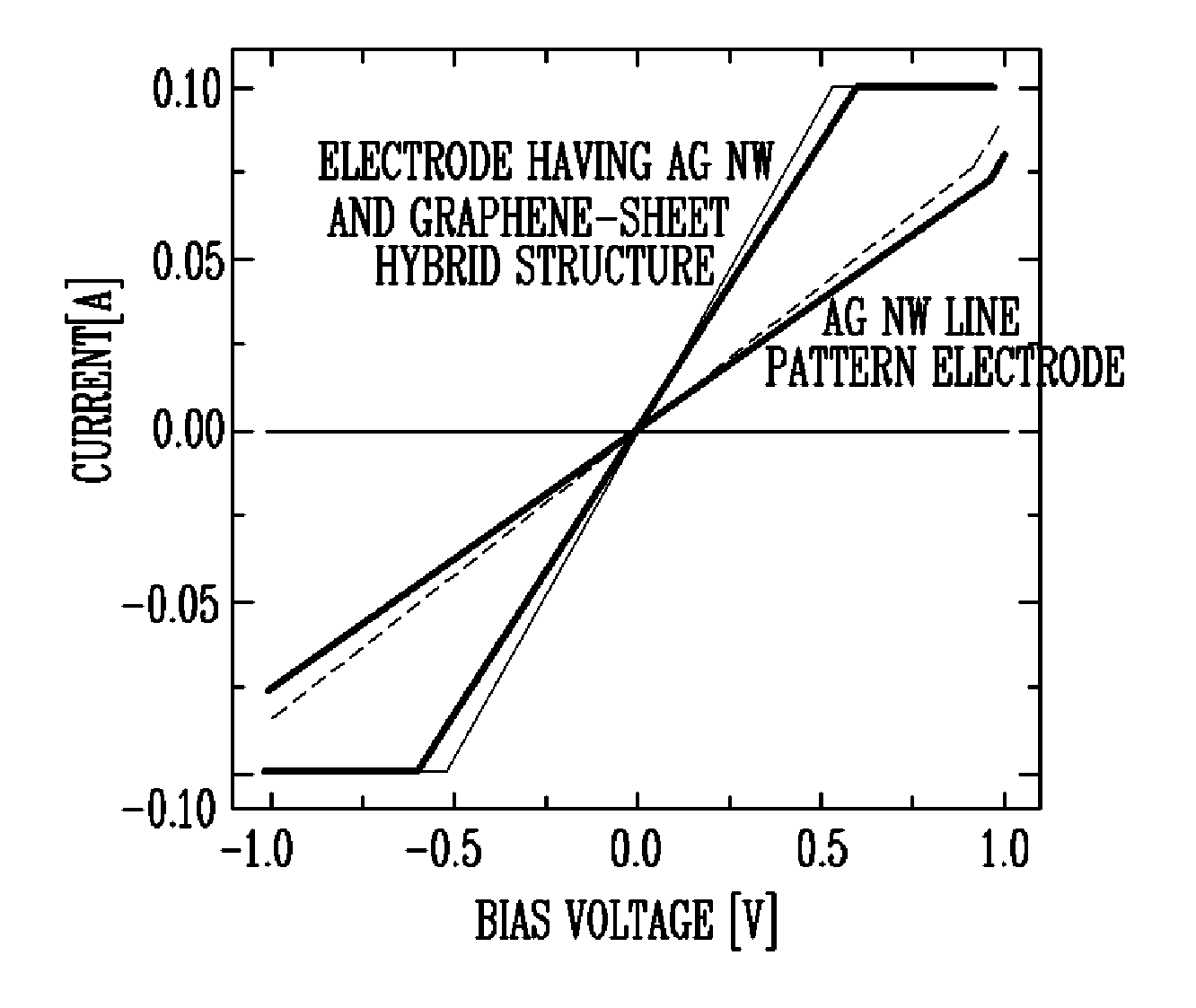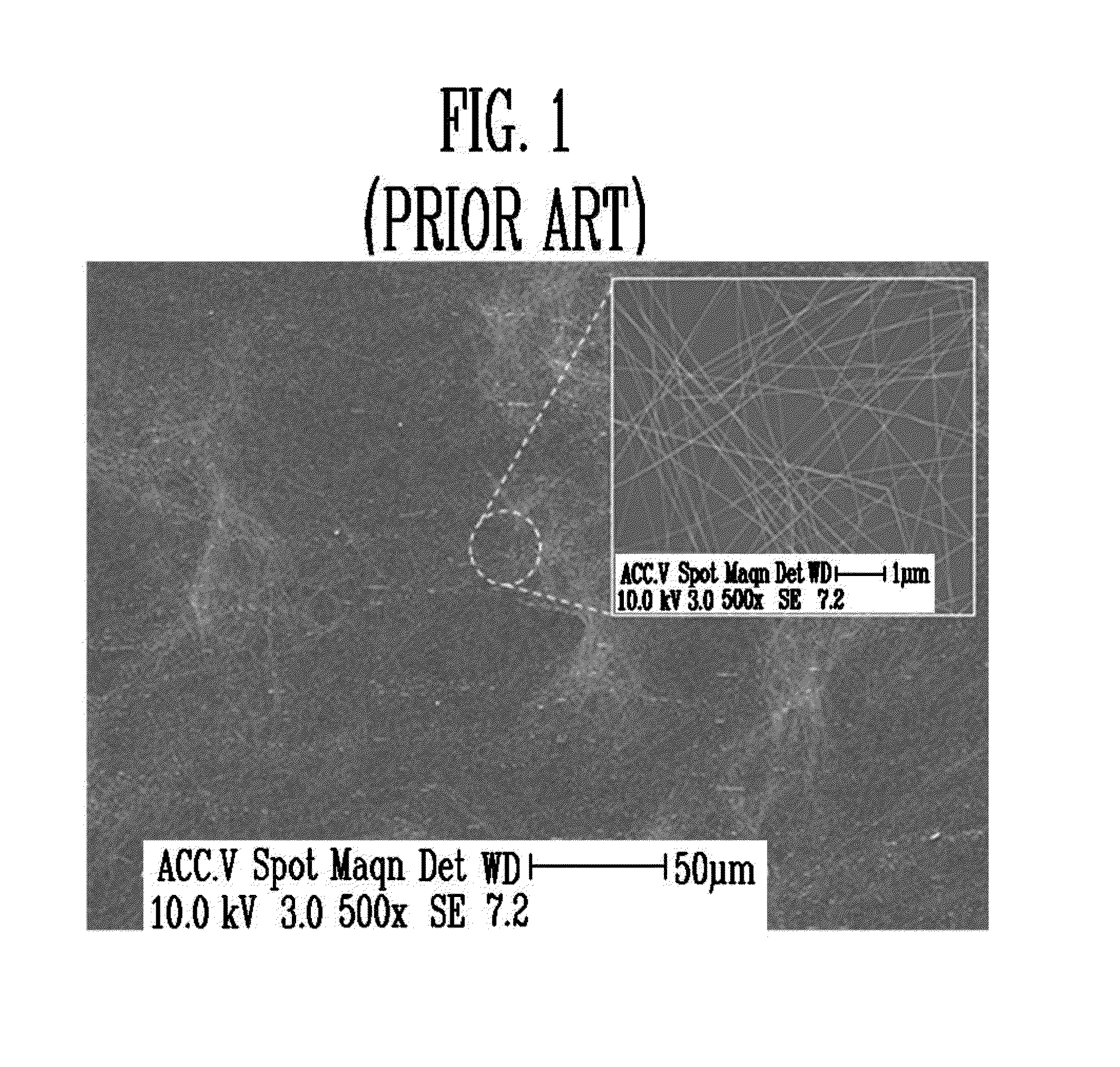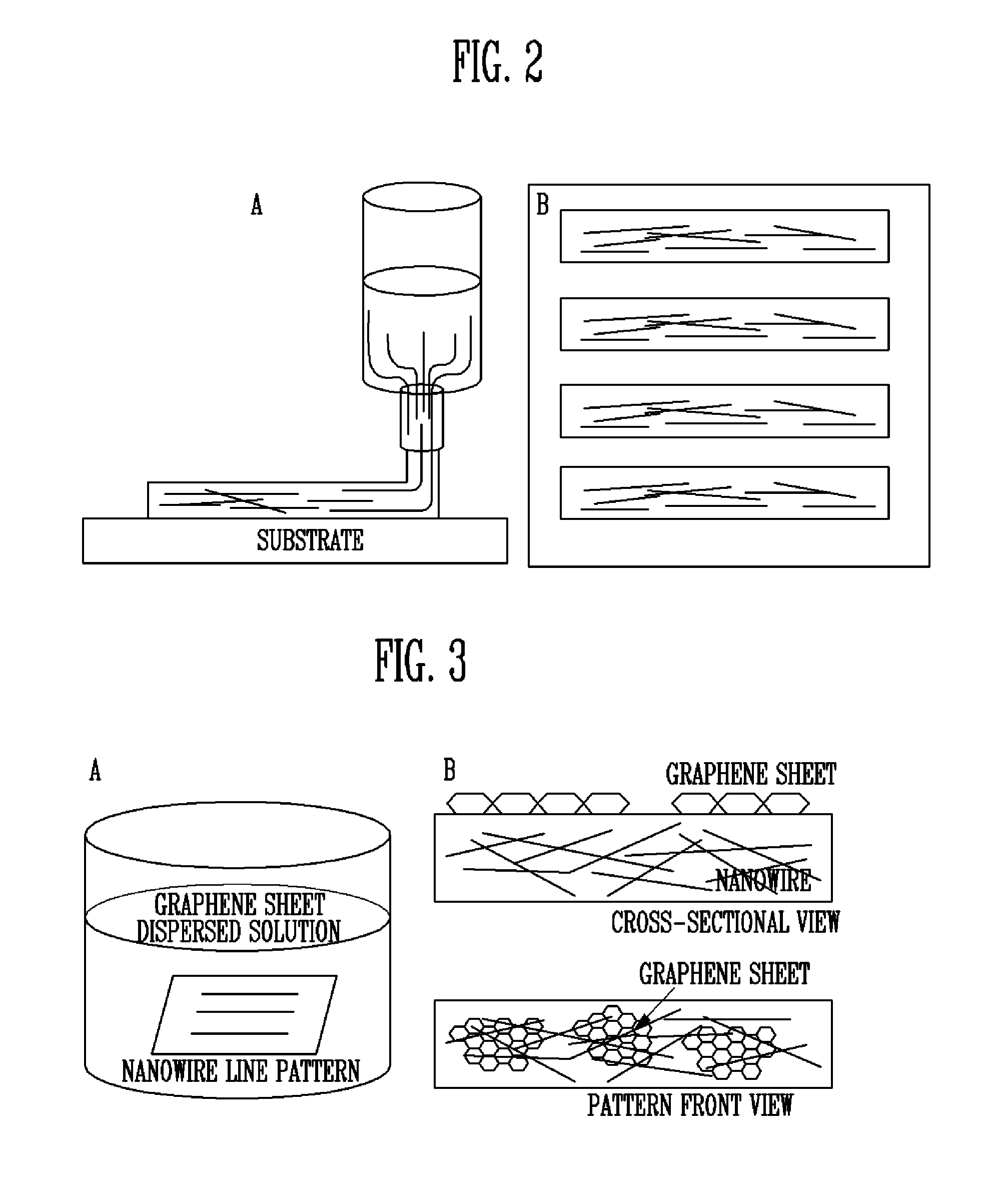Method of fabricating nanowire and graphene-sheet hybrid structure and transparent electrode using the same
a hybrid structure and nanowire technology, applied in the direction of superimposed coating process, instruments, transportation and packaging, etc., can solve the problems of degrading a conductive property, reducing the transmittance to 70% or lower, and increasing the agglomeration phenomenon of nanowires, so as to improve the crosslinking efficiency of nanowires, prevent the effect of agglomeration and conductive properties from being degraded
- Summary
- Abstract
- Description
- Claims
- Application Information
AI Technical Summary
Benefits of technology
Problems solved by technology
Method used
Image
Examples
example 1
[0053]Step 1. Prepare a mixed solution of silver (Ag) nanowires and a material
[0054]1. First, a dispersion solution is prepared by evenly dispersing silver nanowires in a solvent so as to have a ratio of 1 w %.
[0055]2. A mixed solution is prepared by melting polyvinyl alcohol in ultrapure water so that viscosity of the solution has a value of 5 to 30 cps. In this case, polyvinyl alcohol and ultrapure water are adjusted so that a ratio of the polymer material and the ultrapure water solvent is about 10 w % by evenly mixing 100 mg of polyvinyl alcohol and 100 ml of ultrapure water.
[0056]3. A mixed solution is prepared by mixing the prepared silver nanowire dispersed solution and the polymer solution so that a volume ratio of the prepared silver nanowire dispersed solution and the polymer solution is 2:1.
[0057]Step 2. Fabricate an alignment pattern in which the silver nanowires are continuously connected
[0058]1. The prepared mixed solution of the silver nanowire dispersed solution and ...
PUM
| Property | Measurement | Unit |
|---|---|---|
| width | aaaaa | aaaaa |
| temperature | aaaaa | aaaaa |
| transmittance | aaaaa | aaaaa |
Abstract
Description
Claims
Application Information
 Login to View More
Login to View More - R&D
- Intellectual Property
- Life Sciences
- Materials
- Tech Scout
- Unparalleled Data Quality
- Higher Quality Content
- 60% Fewer Hallucinations
Browse by: Latest US Patents, China's latest patents, Technical Efficacy Thesaurus, Application Domain, Technology Topic, Popular Technical Reports.
© 2025 PatSnap. All rights reserved.Legal|Privacy policy|Modern Slavery Act Transparency Statement|Sitemap|About US| Contact US: help@patsnap.com



